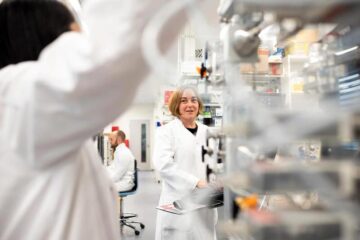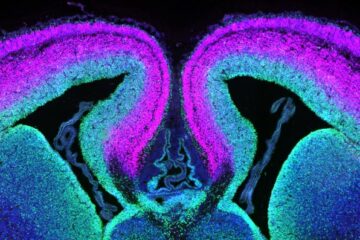
– new possibilities in product labeling. Researchers from INNOVENT e.V. and Ferdinand-Braun-Institut gGmbH have developed a measurement technique that allows to detect nanoscale fluorescent thin films for the first time…

A research team lead by scientists from the Max Planck Institute for Biology, Tübingen, has now made substantial progress in understanding how gut bacteria succeed in their human hosts on…

Research icebreaker departs for a process study in the marginal ice zone north of Svalbard and glacier research off Greenland. Today, the research vessel Polarstern will depart on a seven-week-long…

Five-hundred million years ago, it was relatively safe to go back in the water. That’s because creatures of the deep had not yet evolved jaws. In a new pair of…

Equivalent total oxidation potential of a plasma-activated medium has implications for cancer treatments. Chinese researchers may have found a new approach to treat cancer by using a plasma treatment to…

Single gene previously linked to rare syndrome of epilepsy, autism and developmental disability. A single gene that was previously found to be the driving force in a rare syndrome linked…

Unusual magnetically driven vortices may be generating Earth-size concentrations of hydrocarbon haze. While Jupiter’s Great Red Spot has been a constant feature of the planet for centuries, University of California,…

Scientists from the H.E.S.S. collaboration including a consortium of German universities, the Max-Planck-Institut für Kernphysik and the CNRS in France have recently identified electrons and positrons with the highest energies…

Scientists at the European XFEL and DESY produce high-power attosecond X-ray pulses at megahertz repetition rates. Publication in Nature Photonics. A research team at European XFEL and DESY has achieved…

New insights into how checkpoint inhibitors affect the immune system could improve cancer treatment. A multinational collaboration co-led by the Garvan Institute of Medical Research has uncovered a potential explanation…

University of Wisconsin–Madison biochemists have developed a new, efficient method that may give first responders, environmental monitoring groups, or even you, the ability to quickly detect harmful and health-relevant substances…

Constant ‘churn’ of new cancer cells gives the disease ample room for evolutionary innovation, according to a study in the journal eLIFE. Researchers at the University of Cologne and the…

Electrically defined quantum dots in zinc oxide. Researchers have successfully created electrically defined quantum dots in zinc oxide (ZnO) heterostructures, marking a significant milestone in the development of quantum technologies….

Using energy- and resource-saving methods, a research team at the Institute of Inorganic Chemistry at TU Graz aims to produce high-quality doped silicon layers for the electronics and solar industries….

A large number of 2D materials like graphene can have nanopores – small holes formed by missing atoms through which foreign substances can pass. The properties of these nanopores dictate many…

New deep learning architecture enables higher efficiency. It is the computational processing of images that reveals the finest details of a sample placed under all kinds of different light microscopes….

Humans and animals move with remarkable economy without consciously thinking about it by utilizing the natural oscillation patterns of their bodies. A new tool developed by researchers at the Technical…

AI-enhanced metalenses achieve high-resolution, full-color imaging for compact optical systems. Modern imaging systems, such as those used in smartphones, virtual reality (VR), and augmented reality (AR) devices, are constantly evolving…